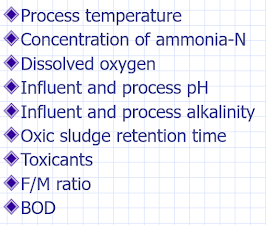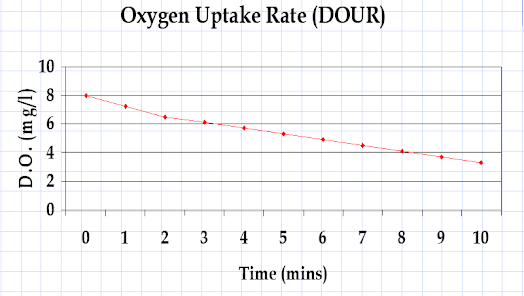Biological Nutrient Removal Basics
II
The goal of this article is:
1. To
discuss the purpose of recycle in configurations other than SBRs.
2. To
review inhibiting BNR processes.
Learn Theory! Learn Theory! Learn Theory! If you know
theory you can use it! If you don’t know theory you can’t use it! (Extraordinary
Leadership: Thinking Systems, Making a Difference, 2009, Reberta M. Gilbert,
M.D, pg 5)
____________________________________________________________________________________
The last article discussed some
basic BNR concepts as it relates to sequencing batch reactors. This article
will cover how these concepts can be applied to configurations other than SBR’s.
Figure 1 below illustrates the configuration of a 5-Stage Bardenpho Process.
FIGURE 1 The 5-Stage Bardenpho
Process
Recycle
The primary difference between an
SBR and more conventional configurations is the SBR is divided TIME while
other treatment configurations are divided by SPACE. In other words, in facilities
other than SBR’s, the anaerobic, aerobic and anoxic periods are processed in
separate tanks. These tanks are fixed in size, which means the amount of time
the wastewater spends in each tank is determined by the flow entering that tank
(hydraulic detention time). The only ways the hydraulic detention time can be
altered is by changes in the influent flow, or the addition of internal
recycle. In the illustration above, there are two internal recycles: one to
return nitrate-rich wastewater from the effluent of the aerated tank to the influent
of the first anoxic tank. The second one returns the MLSS from the final
clarifier to the head of the anaerobic tank. One recycle that is not shown that
has become more common is a recycle line to return phosphate-rich wastewater from
the aerobic tank back to the anaerobic tank for additional processing.
The recycle rates in conventional
activated plants (plants not required to nitrify or remove any other nutrients)
are typically in the range of 50% - 150% of the average daily flow. In BNR
systems, the recycle rates can be as high as 600% (a six to one ratio) of the
average daily flow. The primary purpose of the internal recycle is to return
partially processed wastewater back to the previous tank for additional
processing. The way recycle does this is by increasing the hydraulic retention
time in that specific portion of the process. To express it in another way, using
the illustration in figure 1 above as the example, when flow is returned from
the effluent end of the oxic tank to the anoxic tank, the hydraulic retention
time is increased in those two tanks, and in those two tanks only.
Typical Factors Inhibiting
Biological Nutrient Removal
Besides ensuring there is enough
time for the separate BPR processes to be completed, there are other factors
that can inhibit BPR. The most common factors are expounded on below.
Factors Inhibiting
Nitrification
Nitrification consumes
approximately 7.1 parts of alkalinity for every part of ammonia converted to
nitrate. It also consumes around 4.6 parts of oxygen for every part of nitrate
produced. Concerning oxygen, oxidation ditches have been known to fully nitrify
at DO levels of 0.7 mg/L, so it is not necessary to jack up the oxygen levels above
1.0 mg/L when having ammonia issues. The optimum pH range is 7.5 to 9.0 units,
but they do not like sudden changes in pH. The effluent alkalinity should be
maintained at 70 mg/L but not allowed to drop below 40 mg/L for long periods.
The BOD:TKN ration should be above 4:1 and the SRT should not be allowed to drop
below five (5) days.
If accepting leachate, leachate tends
to produce a tan color in the effluent. This color can interfere with the colorimetric
test method for ammonia (anything using a spectrophotometer), so the
electrometric test method (probe) is recommended instead.
Factors Inhibiting
Denitrification
The definition of anoxic for
wastewater treatment is MLSS with ‘No Free Oxygen and Some Nitrates’. For
optimum denitrification, a DO level well below 0.4 mg/L is required. Because denitrification
always follows nitrification, the endogenous BOD may be depleted prior to the nitrated
reaching the anoxic period of treatment. There needs to be at least 2.9 parts
of COD (BOD takes too long to analyze) for every part of nitrate and the proper
range for the other environmental factors (pH, temp, SRT). For every 1.0 part
of NOx converted to Nitrogen gas, 3.6 parts of alkalinity will be recovered, reducing
the need for alkalinity addition.
One condition that can occur is
oxygen creep from the aerobic phase or tank into the anoxic phase or tank, especially
during winter when the oxygen saturation rate of the water is very high, microbial
activity is very low and/or the DO levels in the aerobic tank are very high. Oxygen
can carry over into the anoxic tank converting it into an aerobic tank.
Concerning DO Levels, practically
speaking for both optimum treatment performance and power consumption, the DO
should be kept as low as possible in the aerobic portion of treatment. Generally
speaking, unless there is something else going on in the aeration basin, the DO
does not have to exceed 1.0 mg/L in non-SBR systems and in SBR systems the
maximum optimum DO may fall between 1.5 – 2.5 mg/L . This will almost ensure
that oxygen creep into the anoxic period of treatment will not occur.
Factors Inhibiting Luxury
Phosphorous Uptake
The definition of anaerobic for
wastewater treatment is MLSS with ‘No Free Oxygen and No Nitrates’. Facultative
organisms will utilize oxygen from various molecules in the following order: O2,
NO3, SO4 and CO2. There is normally very
little SO4 and CO2 in the waste stream, therefore
tracking the NO3 levels entering the “anaerobic” period of treatment
is sufficient to ensure the system is truly in an anaerobic condition.
Concerning NOx in the influent, the
NOx concentrations are typically well below 1.0 mg/L. However, there is a
popular chemical often added to the collection system for odor control. This chemical
is Calcium Nitrate. It does a good job of reducing or eliminating sulfide
production in the collection system but will ‘poison’ a biological phosphorous
removal (BPR) process. Additionally, Nitrate/Nitrite or total nitrogen limits
are being added to NPDES permits and adding calcium nitrate may have an adverse
effect on the effluent stream as well.
Side Stream Management. Plants
just beginning biological phosphorous removal have never had to be concerned
with high phosphorous levels in the digester decant. The phosphorous that has
been absorbed by the biosolids will be released again when the air is turned off
for decant. If left off for more than 24 hours, the phosphorous in the decant can
exceed 700 mg/L. This will be returned to the head of the plant and will have
an impact on the effluent phosphorous levels.
Plants that are monitoring
phosphorous may want to consider operating the digester in a manner that
reduces the amount of phosphorous discharged back to the head of the plant. The
main objective would be to decant a little every day. One method would be to
only aerate the digester for three hours immediately after decanting, then
turning the air off, letting it settle overnight, then decant first thing in
the morning. This would have to be done every day.
Conclusion
These are just some of the more typical
issues that can affect nutrient removal in the typical WWTP. Paying attention
to these factors can serve as signposts for process control and can assist in
the ability to troubleshoot the plant. There are may other factors that may
occur as well.
The next article will focus on what
I call “The Fifteen Minute BOD” and the
University of Tennessee says is the “most valuable yet underutilized test
available for operators of the activated sludge process”.
The Georgia Rural Water Association is
always available to assist any municipality that serves a population of
<10,000 with process control, troubleshooting, training, lift station
maintenance, smoke testing, leak detection, standard operating procedure
development, asset management development, or any other compliance and
operational issues that may crop up. To request their assistance, please
contact them at Contact Us -
Georgia Rural Water Association (grwa.org).
***********************************************************************************
Feel free to contact me should
you serve a population >10,000 or have any questions or issues that the GRWA
is unable to assist you with. Also, if you would like to contribute an article
feel free to email me at the address below. I am always looking for
contributors that have an interesting perspective, topic or has an interesting
case that they would like to share – especially if the solution is a direct
result of applying the principles from this forum.
Dennis Brown,
Wastewater Specialist and Trainer, Retired
678.750.3996






Comments
Post a Comment